Hyesoo Park’s Project Dialogue, Vol. 4: Our Unknown Country: Changing “Antagonism to Agonism” and “Enemies to Adversaries”
Juhyun Cho (Chief Curator, Ilmin Museum of Art)
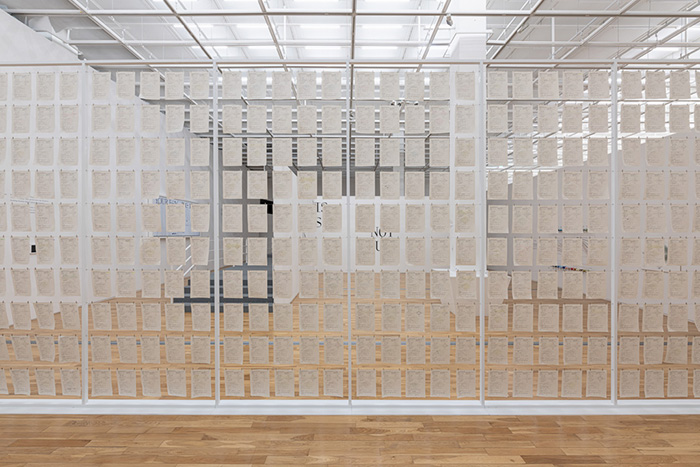
Hyesoo Park uses her works to strike up a conversation. Entering the exhibition space, visitors are asked, “Are you botong?” (i.e., “Are you Normal?”). People might unwittingly respond to their neighbors, but there are more questions yet to come. Next, Park asks, “What dream did you have to sacrifice?” Now visitors sit at a keyboard and type the secret stories that they have been keeping bottled up inside them. Upon stepping into the exhibition and taking up this conversation with the artist, visitors can voluntarily fill out a survey, write an essay, draw a picture, chat with other people (even if they are strangers), or find another way to share the thoughts that they have been holding onto. For the past ten years that Park has been presenting Project Dialogue, she has also been collecting and analyzing data from visitors’ conversations, emotions, and motions. After being interpreted and treated by the artist, this data is then used to visualize the collective memories and unconsciousness of Korean society. In this exhibition, this data is again revised and transformed into an array of artistic creations, including archives, installations, poetry, theater, performance, and video.
The result is an innovative new conversation machine that can enable ongoing interactions among people from different times and places. Borrowing her methodology from social sciences, Hyesoo Park provokes people to engage with controversial topics and platforms through artistic practices, which are quite different from the work of psychoanalysts or politicians. In particular, Park’s Project Dialogue functions as critical art by altering social boundaries and transforming audience members into active agents of intervention. How is this possible?
The mechanism of her works can be roughly divided into three concurrent processes: initiating a relational program based on fictitious hypotheses; creating an “agonistic” space through “dissensus;” and proposing a virtual business model. By striking up a conversation, Park’s artistic practices generate an endless stream of questions, awakening peoples’ dormant desire for self-transformation.
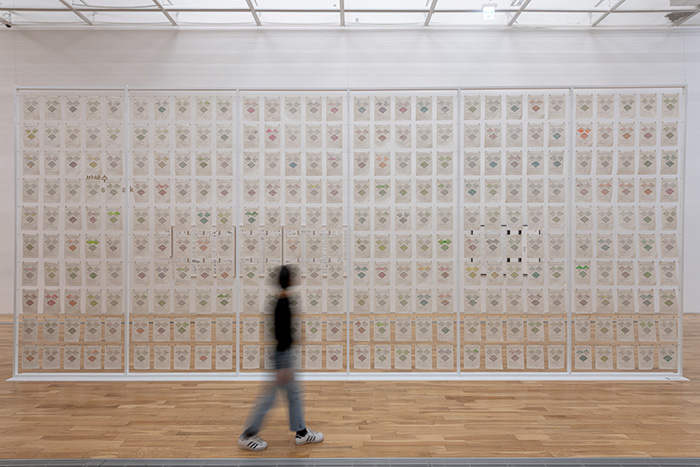
1. Relational Program Based on Fictitious Hypotheses
Exhibited at Korean Artist Prize 2019, Project Dialogue, Vol. 4: Our Unknown Country is a theatrical stage for a psychodrama, a research lab for a social scientist or psychoanalyst, or an embodiment of social dissensus and agonism. The work is an extension of previous projects in which Park visualized the life values or distinctions that ordinary people were forced to surrender in order to live from day-to-day or to belong to groups or communities. This project constructs an agonistic space in order to reveal the hidden, irrational, and collateral effects that are concealed within any group signified by the word “us.” To begin, Park conducted a preliminary survey among Koreans who consider themselves to be “middle-class,” thereby revealing the subjective terms by which they define the middle class. *1 She then studied the boundaries, conditions, and characteristics of this group—i.e., “us”—and used the results of her research to experiment in various ways with the conflicts, dissensus, and politics related to the Other who exists inside “us” but is still represented as “not us.”
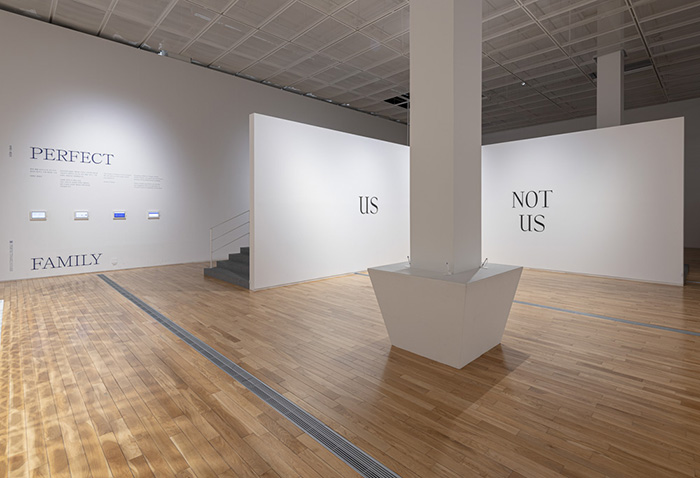
Our Unknown Country (2019) is an inclusive platform comprising a survey, analysis, experiments, Forum Theater, documentary, archives, installations, and even a virtual corporation. To encourage the active intervention of the audience, the project takes a multitude of forms, including the visual archives of the original survey and analyses; a documentary video that translates the artist’s analyses of relevant issues into art; display cabinets of objects collected during the making of the documentary; a virtual business model as an alternative apparatus to reality; and a theatrical psychodrama wherein the central agonism of all the narratives is choreographed and performed. By appropriating these social-science models, the artist devised a relational program that serves as a platform for interactions.*2
Hence, the artist’s work is actually created via the audience’s direct intervention within the social sphere as one functional model. How does Hyesoo Park’s relational program operate? First, the preliminary survey was distributed to 507 members of the Korean middle class, including government officials, office workers, housewives, etc. Then, in collaboration with psychiatrist Yoowha Bhan, Park analyzed the parameters of the group that these Koreans identify as “us.” In her analyses, Park focuses intensively on the extreme dichotomization of Korean society. Notably, the survey participants overwhelmingly chose “family” as the group that they most strongly identified as “us,” by a wide margin over affiliations of nationality or employment. This result is quite interesting, given that the dissolution of traditional families in Korea, as demonstrated by the rise of one-person households, has been a widely discussed phenomenon in recent times. Thus, the data seems to show that, since Korea’s rapid economic growth has leveled off, today’s middle-class Koreans no longer believe in a safety net provided by their country, society, or work place. The survey also suggests that today’s Korean youth do not nurture big dreams and are reluctant to take risks. At this point, the Korean middle class believes that family is the only group that they can count on for warmth and security as they face an uncertain future.
At the entrance of the exhibition, the survey report is displayed for viewing in the same area where new visitors jostle around to fill out the survey, creating a very unique atmosphere. Notably, Park did not originally intend to review the objective social data acquired through the survey. Then at what point does Park’s survey (in collaboration with a psychiatrist) diverge from the usual practices of social scientists to become a work of art?
By using the results to propose a highly probably yet fictitious hypothesis (within the 0.05% margin of error), she leads viewers into a space of contemplation that eventually leads to agonism. In “Who Are We?,” Park enacts a bit of psychological warfare by transforming the survey results into a fantastical hypothesis about the contemporary Korean family, suggesting that the strict Confucian familism of the past may be a solution to the uncertain future.*3 Hence, Park has produced a relational program that functions by exposing the hidden conflict, irrationality, and side effects within the ideology of family.
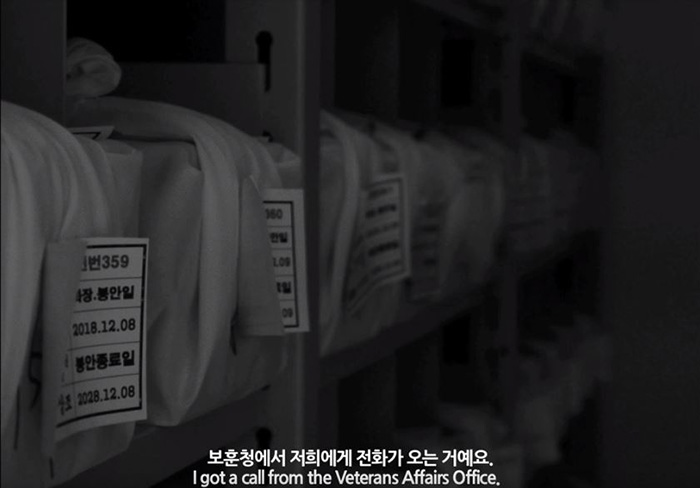
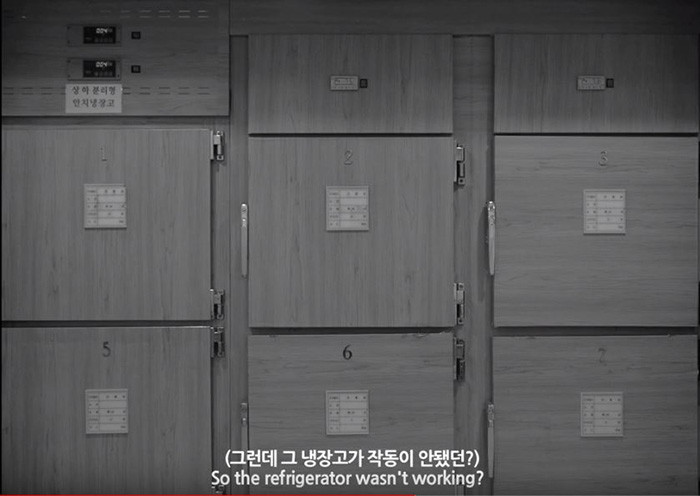
To Future Generations (2019)
Park also explores the underlying issues of familism in the documentary video To Future Generations (2019). By examining the death of a family, the video incisively reveals how the conception of family based on bloodlines that is still prevalent in Korea has been co-opted by neo-liberalism. Documenting the work of four estate administrators (who oversee the distribution or disposal of people’s belongings after they die) and four funeral directors, the video shows various places related to the deceased (e.g., homes, funerals, mortuaries, crematoriums) that are devoid of family or friends. In particular, the video reveals the stories of elderly people who lived and died alone, sometimes remaining undiscovered for days or weeks.
Sadly, many people facing such a lonely death are further burdened by governmental and social discrimination. Hence, the video illuminates the specious and harmful notions related to the ideology of familism. What is the exact nature of the affinity that people feel for their family? By raising uch questions, Park forces us to consider whether the popular fantasy of “home sweet home” is merely a fallacy that society has indoctrinated in us. And if this is the case, she further wonders whether a new system prioritizing individual rights over the family should be implemented.
The video includes narration of the poem “To the Future Generations” by the Germanplaywright and poet Bertolt Brecht, written in 1934 while he was in Denmark taking refuge from the Nazis. This poem can be interpreted as the last will and testament of people who dedicated their lives to their country, only to die alone. In one corner of the exhibition, Park displays the belongings of a man whose death (and body) were not discovered for some time, even though he was a patriot and upstanding citizen who had fought in the Korean War before becoming a high school teacher. Visiting the man’s home, Park found medals, awards, and other memorabilia from his military service, along with his diaries and notes detailing his loneliness. As the man wrote, his children refused to accept his keepsakes, which is how they ended up in the exhibition. What does it mean when a man of such national merit dies alone, severed from his country, community, and family? Perusing the exhibition, viewers cannot help but ask such questions over and over.
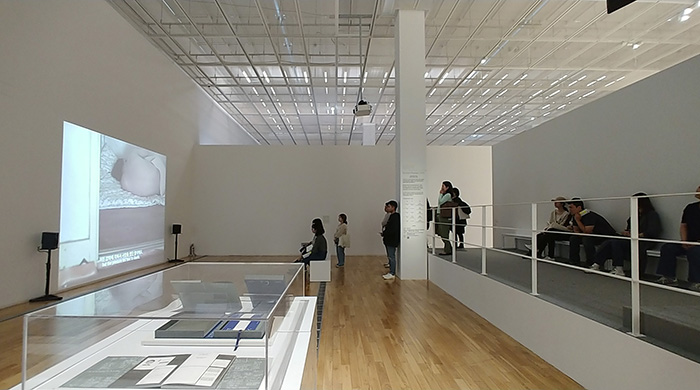
2. Creating an Agonistic Space Through Dissensus
The centerpiece of Our Unknown Country is a special theatrical presentation entitled No Middle Ground (2019), staged inside a large space that was designed after Geumsan Church in Gimje, one of Korea’s first Christian churches. Park thus invokes one of the most polarizing issues in Korean society: religion. The earliest churches in Korea, built in the late nineteenth and early twentieth century, were constructed in the shape of an “L,” in order to create separate seating for men and women, in accordance with the existing Confucian tradition. The design of this church represents the Korean society of today, after more than a century, when gender equality has also spawned a culture of hatred and misogyny. Of course, Korea is not alone in dealing with a culture of extremist contempt. Since the fall of the Berlin Wall, the unfettered spread of capitalism has given rise to a standardized world order that demands conformity, which has thus triggered a backlash of extremism. The world is becoming increasingly polarized by nationalist thinking that is fueled by hatred, a lack of communication, and political retrogression.
As Belgian political theorist Chantal Mouffe has diagnosed, we are now living in the era of post-politics. Thus, Mouffe contends that critical art must seek to create agonistic spaces in order to confront global issues (e.g., economic inequality, terrorism, cultural imperialism) brought on by the consensus entailed by capitalism. The stage of Hyesoo Park represents just such a space. As the title suggests, there is no intermediary space in No Middle Ground, which is sharply divided between into two groups: “US” and “NOT US.”
Visitors must exercise their own agency by reorganizing the boundaries based on perceived or potential conflict. Meanwhile, Forum Theater “URI” (2019) is a lecture performance and a type of psychodrama designed in collaboration with experts in psychology, sociology, economics, and cultural anthropology, and based on five themes that Park selected from the results of the survey “Who Are We?”.*4 Unlike the unidirectional communication of most lectures and seminars, however, the Forum Theater generates agonism by subtly coaxing the audience to participate by placing them in conflict situations. As they are induced to create boundaries for excluding or alienating other people, the discussion participants directly experience the dissensus between individuals and groups that has come to characterize many Korean communities.
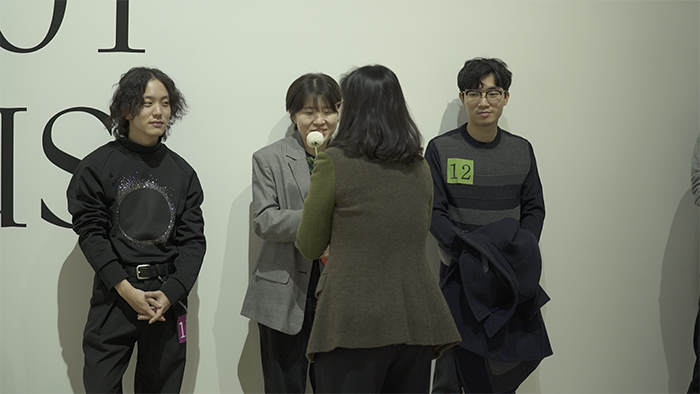
Psychological Experiment
For example, the Forum Theater that was held on October 31, 2019 was called “The Discontented.” Designed by psychiatrist Yumi Sung, the discussion was actually a psychological experiment about social division. Acting as an authority figure, the discussion organizer (i.e., Seong Yumi) arbitrarily divided the forty participants into two groups (i.e., “Us” and “Not Us”), and then presented one group with flowers and the other group with foxtail plants. After receiving these “rewards,” each group was guided away from the other group and then asked to speculate about the organizer’s criteria for dividing them. The organizer then reappeared and stated that the “Us” group consisted of people that she liked, while the “Not Us” group included people that she hated; yet the organizer still did not reveal any criteria for her affinity or hatred. Next, the organizer announced that only people from the “Us” group who remained until the end of the discussion would receive a reward, and then offered participants a few chances to move from one group to the other, either by their own choice or someone else’s. Through this process, the participants experienced heightened forms of the psychological perceptions of competition, reward, alienation, conflict, and discontent that everyone encounters within a community. Indeed, the primary purpose of the experiment was to bring these perceptions out into the open.
As the organizer, the psychiatrist set up the hypothesis that the participants would not like being kept in the dark about why they were being divided, being “liked” or “disliked,” or being given different tokens (i.e.,lower vs. foxtail). Participants were then asked to make sacrifices for the group based on their own reasoning; thus, if they wished to bring someone into their own group, a current member had to be let go. But even though this experiment was designed by a psychiatrist in accordance with psychoanalytic methodology, it developed in unpredictable ways that entered the realm of art. Of course, unlike the members of "real” communities, the participants of this orum Theater had no affiliations or intimacy with one another, and they were fully aware that they were attending an art function. Hence, the issue of changing groups was not a matter of life or death, as it might be in real life. Perhaps that is why most of the participants simply looked bemused, as if waiting for some stronger stimulus.
Deviating from the organizer’s intentions, this type of attitude actually reflects an interesting characteristic of young Korean adults, who themselves represent a type of alternative community. Rather than simply acquiescing when the organizer attempted to exercise her authority, the young participants instead voluntarily surrendered their reward, thereby amplifying the pride and team spirit associated with the “Not Us” group. In this way, they were able to confer authority to someone representing the supposedly marginalized group (in this experiment, it was the artist Hyesoo Park), which enhanced their own feelings of solidarity and entitlement. In this way, the work fulfilled Mouffe’s appeal for critical art that raises questions and awakens people’s desire for self-transformation: “According to the agonistic approach, critical art is art that foments dissensus that makes visible what the dominant consensus tends to obscure and obliterate. It is constituted by a manifold of artistic practices aiming at giving a voice to all those who are silenced within the framework of the existing hegemony.”*5
As an alternative to our era of consensus, Mouffe proposes the concept of agonism, which revolves around acknowledging the rights of one’s opponent or antipode in the “us and them” relationship.*6 Rather than issuing reproaches for certain incidents, critical art seeks not only to create an agonist environment wherein the two sides must engage with one another, but also to liberate the oppressed through dissensus. This corresponds to Jacques Rancière’s argument that critical art should intervene in the “distribution of the Sensible” by “making the invisible visible and the unheard heard.”*7 The unpredictable results of this experiment go beyond the distribution of the Sensible that determines the boundaries by which we define our place in a community. With the Forum Theater, Hyesoo Park produces a space where participants experience conflicts and confusion within their agreed boundaries, so that the resulting dissensus shatters the agreement.
Rather than trying to directly change the existing system or discourse, Park instead aims to activate people’s thoughts and feelings, ultimately making them into the agents of their own dissensus. Through this methodology, the “discontented” who participated in the Forum Theater became joyous transgressors who broke with convention and created new boundaries.
Through her artistic practices, Hyesoo Park helps people modify their own senses and perceptions, thus enabling them to see, hear, think, and speak the sensations that they became aware of while experiencing discontent and dissensus with the structure of the distribution of the Sensible.
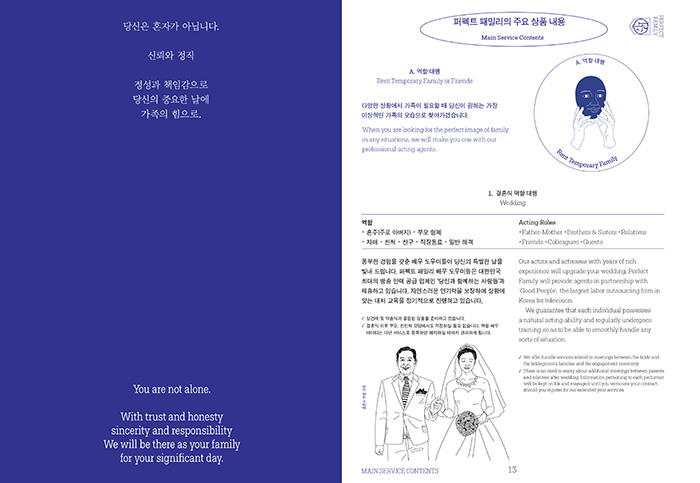
<Perfect Family Inc> Catalog_2019
3. Proposing a Virtual Business Model
You are not alone.
With trust and honesty Devotion and the sense of duty By the strength of family
On your important day.
-from Perfect Family Inc. (by Hyesoo Park)
In Hyesoo Park’s exhibition, she uses her own hypotheses and interpretations to coax visitors to become autonomous producers of critical art in a laboratory space. But at the same time, she also operates another type of relational program in the form of a virtual business model. To do so, she first researched various role-playing services in Korea, as well as the service of “renting a family” that exists in Japan. Based on such services, Park created Perfect Family Inc., a virtual company specializing in human rentals or stand-ins. The work consists of a catalogue, website, and advertisement for the company. On the inside cover of the catalogue, the company logo is royal blue and resembles a traditional coat of arms, thus conjuring thoughts of European royalty or aristocracy. The logo is accompanied by the company’s motto: “The leader in the human rental business/ The happiest family you could ever dream of/Perfect Family.” Like a commercial for an insurance company, assuring us of protection from an insecure future, Perfect Family Inc. claims to partner with a strong capitalist network of companies offering diverse services, such as professional actors, event planning, funerary services, elder care, psychiatric care, and match-making. Perfect Family Inc. thus appears to be a dependable family who will comfort and protect us from the hardships of sickness, old age, and death, which we were once assumed to be provisions of nature.
In addition to handling big events such as weddings and funerals, the company also deals with everyday activities that require consideration of ethics, etiquette, and traditional conventions, such as texting your parents to fulfill your filial duty, meeting with your child’s teacher, making apologies, breaking up with your partner, or quitting your job. Emblazoned on a billboard, the image of the ideal nuclear family—mother, father, son, and daughter—accompanied by the company’s slogan “YOUR FAMILY IS HERE” seems to offer the perfect virtual solution for the disintegration of the real Korean family. Simply by visiting the company’s website, anyone can request to purchase whatever service they require.
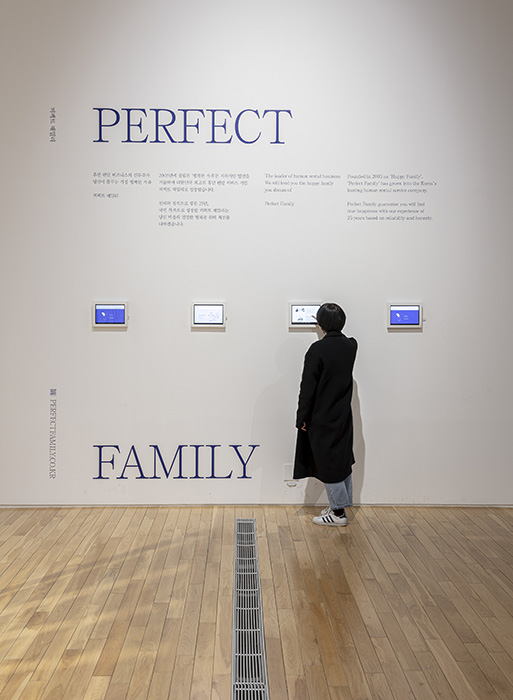
While placing their order, customers communicate directly with Park herself, who collects their information. This data is then analyzed and incorporated into a monthly report that becomes part of the exhibition. For the month of October 2019, the most popular service among the visitors to the exhibition was to rent a person to fill in or accompany them while going to the bank or signing contracts, while the least popular services included renting a spouse, a fill-in for their job, or someone to make a complaint or protest. Among the new services that visitors requested were someone to deal with an “old bastard” or “mansplainer,” a substitute for a school project or graduate presentation, and someone to take care of their pets and plants.
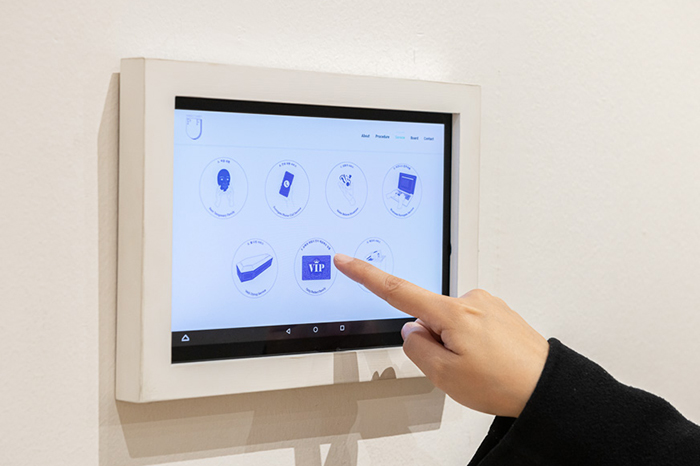
Evincing the new conception of a family in contemporary Korea, these results show that most young Korean adults are not concerned about the traditional composition of a family, as long as they have someone to give them stability and a sense of belonging. Perhaps their notion of “us” is simply whoever might accompany them through life.
Just as it began, this exhibition finishes with a question, which visitors find at the exit: “Can we live with them?” This question immediately summons another question: Who is meant by “them”? This question causes each visitor to reflect upon his or her own situation, to continue the conversation that they started with other people at the exhibition, and to extend the platform of agonism beyond the walls of the museum and into their everyday lives. As Mouffe asserts, true democracy exists in the power to change antagonism into agonism, and enemies into adversaries.8 Through her own venue of agonism, Hyesoo Park helps visitors take control of their thoughts and actions, not by condemning outsiders but by developing a new type of awareness. Art does not become political simply by dealing with political issues, but rather by making the invisible visible and the unthinkable thinkable, thus enabling us to perceive the hidden structure of the world with a new sensibility. By inventing and completing the world around “us,” the relational programs that Hyesoo Park built in Project Dialogue Vol. 4: Our Unknown Country operate as critical art, enacting just such a revolution of sensibility and aesthetics.
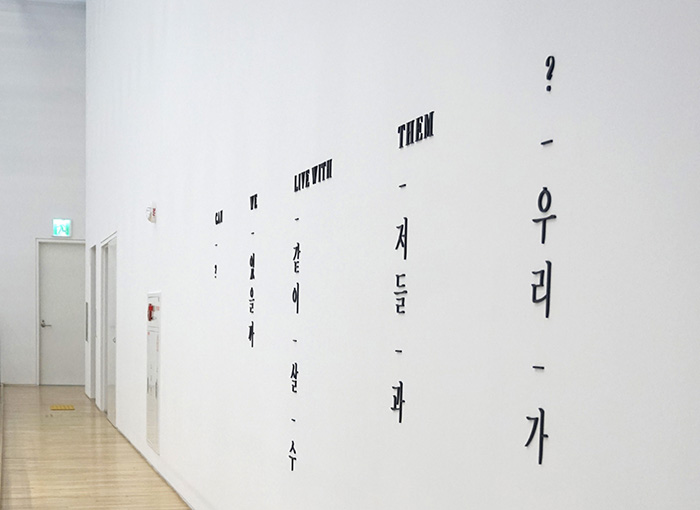
------------------------------------------------------------------
1 According to the Artist’s Statement (2019), Park followed the example of social psychologists who have determined that the main criteria for defining the “middle class” are not objective statistics (e.g., financial earnings), but rather people’s subjective perceptions.
2 As defined by Nicolas Bourriaud, a “relational program”
is a type of artworks that functions by creating opportunities
for the types of intimate interactions and private relationships that have been lost amidst the rise of computer networks and other technology since the 1990s. Nicolas Bourriaud, Relational Aesthetics, trans. Simon Pleasance & Fonza Wood (Dijon: Les Presses du reel, 2002), 70.
3 Hyesoo Park, analysis of the survey, “Who Are We?,” 2019.
4 Forum Theater “URI” (2019) was held once a month
during the exhibition, respectively led by psychiatrist Yumi Sung(“Splitting”), sociologist Myungwoo Nho(“Bonding Membership”), economist Jung-Kyoo Choi(“Trust for Outsiders”), cultural anthropologist KIM Hyonkyong(“I need somebody not just anybody.”), and psychiatrist Yoowha Bhan(“Outsourcing Your Emotions”). The series was co-organized with Curator Mia Kyoungmi Lee.
5 Chantal Mouffe, “Art and Democracy: Art as an Agnostic Intervention in Public Space,” in Open no. 14 (2008): 12.
6 Chantal Mouffe, “The Art of Critical Art,” in Rekto: Verso no. 52 (May-June, 2012): 1.
7. Jacques Rancière, Aesthetics and Its Discontents, trans. Steven Corcoran (Malden, MA: Polity Press, 2009), 25.
8 Chantal Mouffe, “The Art of Critical Art,” 2.









